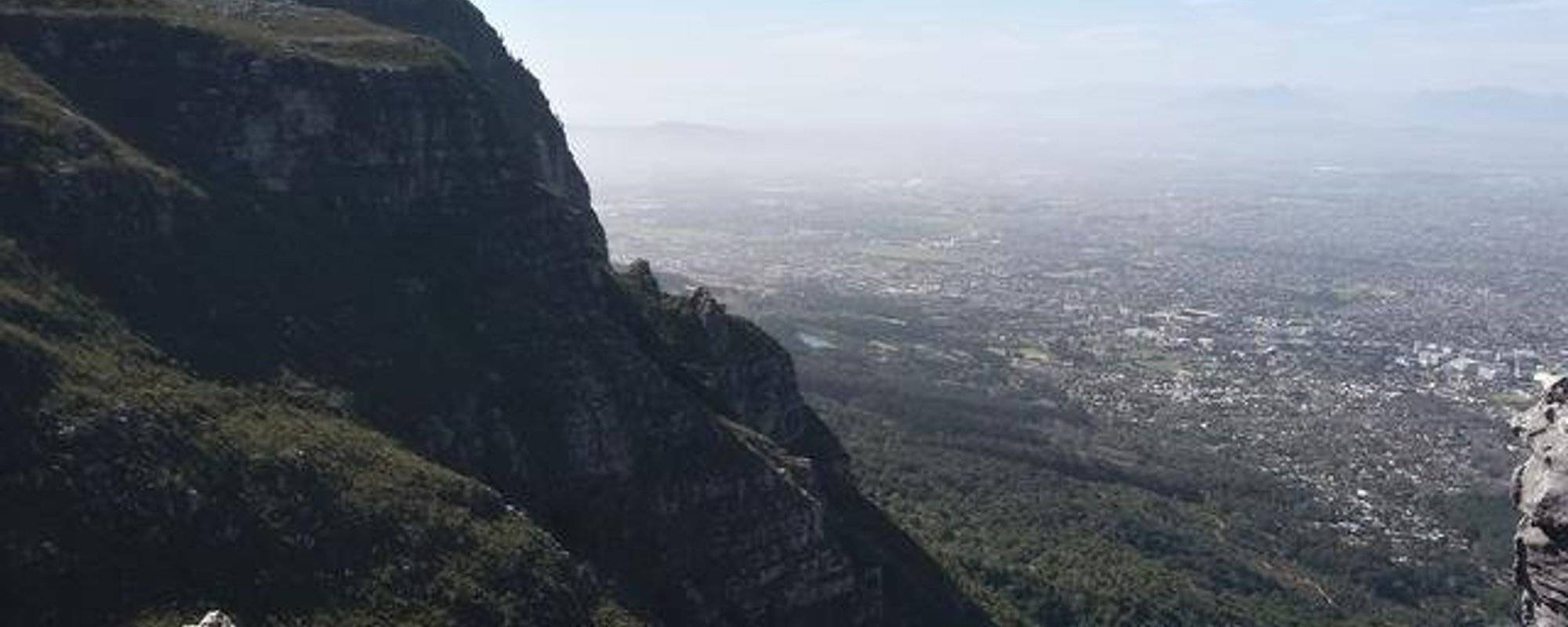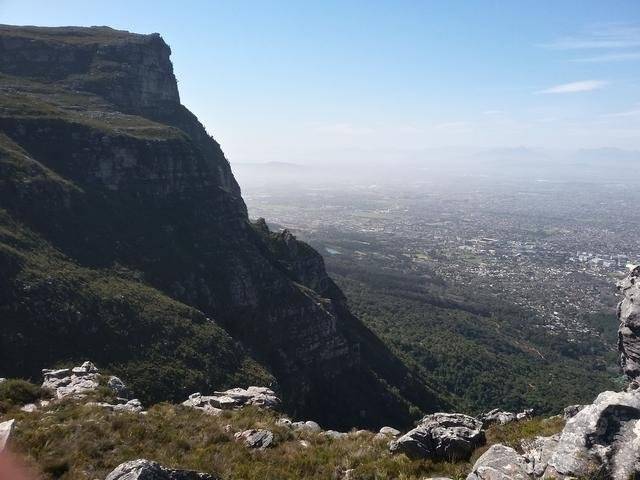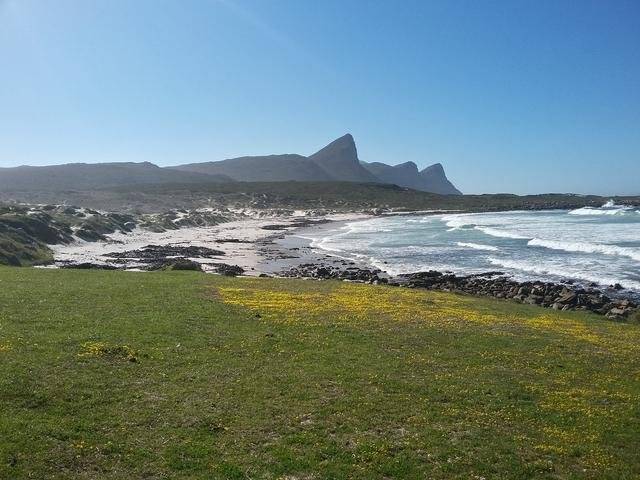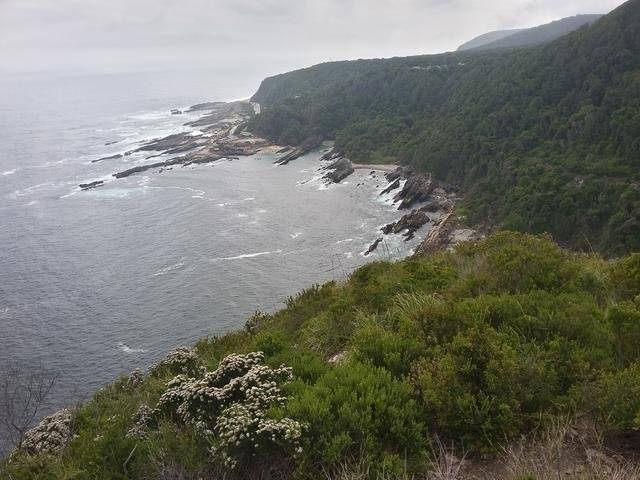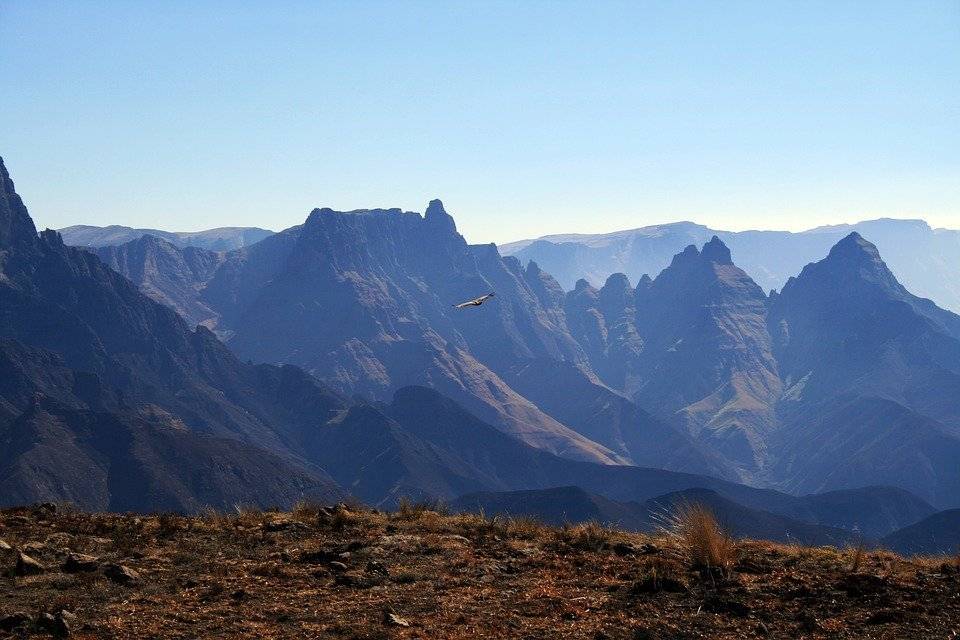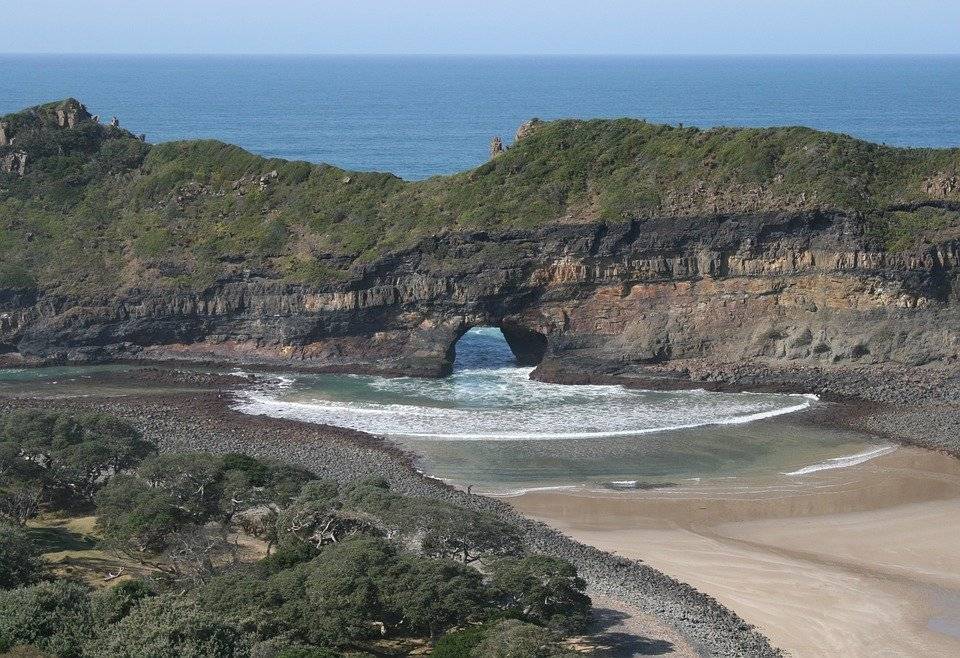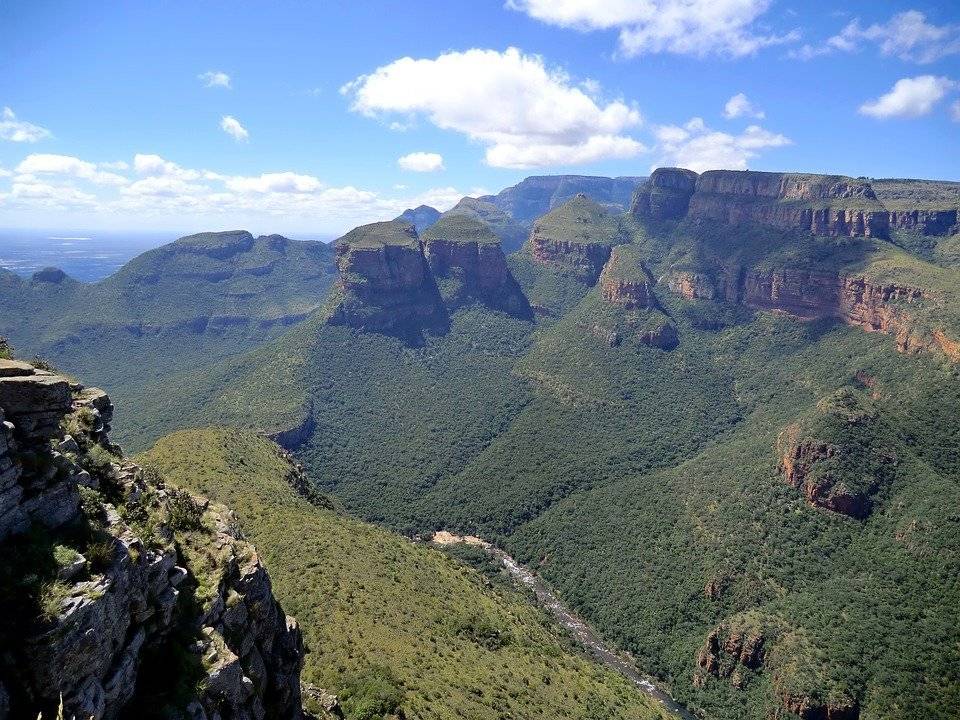Loooong time, no post! It all started with this upgrade thingy. Besides; I have been trying to finish the first draft of my scientific paper. In the meantime, the long-awaited spring has finally arrived. What better way to celebrate it than writing a blog post to prepare the Steemians of southern hemisphere for spring!
It is not an exaggeration when one claims that South Africa is the land of complexities. As much as this is true for the controversial history of the country, this also applies to the geographical features. Being the meeting point of two big oceans brings diversity to the climate. This, combined with the vast mountainous areas, makes South Africa one of the most scenic countries in the world. Hence, you will find that South Africa has a high abundance of nature reserves just like fish in the sea. This is one of the many reasons that thousands of tourists from overseas are attracted to here every year.
With so many nature reserves and hiking trails to choose from, it can be such a mission to get the most out of your South African experience. Here are eight iconic hikes that will give you an idea about how so many people come to South Africa never wanting to leave.
1- Table Mountain
Table Mountain is Cape Town’s most recognisable and iconic landmark due to the flat table-like plateau on top. The mountain has the highest elevation in Cape Town which is 1085 m above sea-level. The Table Mountain National Park has more than a dozen hiking trails with ranging difficulties and a great diversity of indigenous plants. On the lower slopes you will generally hike through lush jungle, encountering small but stunning waterfalls en route. The terrain becomes rocky and steeper as you ascend higher, offering spectacular views of the city and the Atlantic Ocean.
Skeleton Gorge is one of the most popular routes on the eastern side of Table Mountain. This intermediate-level hike is 8.4 km-long, taking approximately 3 hours one way. Starting off at the famous Kirstenbosch Botanical Garden, the route follows a lush and forested ravine before opening on to shrub-covered slopes. It ends up at Hely-Hutchinson Reservoir- one of the five reservoirs on top of Table Mountain that used to be a major source of water supply in the 20th century. Here, you can either relax by the refreshingly freezing water or take another route to the summit. The trail can be challenging at times due to many water streams running down, which make the rocks wet and slippery. Proper hiking shoes is a must as a precaution for the slippery parts.
2- Woodstock Cave
Table Mountain National park is not only famous with the stunning views but also with a high number of caves to explore. One of the largest caves and the most popular one is the Woodstock Cave. It is in the form of a crack 50 m wide and 4 m high halfway up Devil’s Peak at an elevation of 628 m. You can actually spot the crack while driving near the city center.
The hike is very popular since it’s relatively easy to complete. The most preferred hiking route starts off near the Table Mountain Cable-Car Station. It consists of zig-zags and takes approximately an hour to complete. You should look out for the magnificent indigenous flowers of Western Cape along the way. Once at the cave entrance, you will get to see the breathtaking views of Cape Town city, Lion’s Head and Table-Bay view to the north of the city center. Packing food and drinks for picnic is highly recommended. Finally, don’t forget to take a photo whilst jumping at the cave’s mouth and that will guarantee you the perfect instagram post to get lots of likes. ;)
3- Cape Point Trail
The southern-west tip of South Africa has a significant place in the country’s history for serving as a checkpoint between Europe and the Spice Route during the colonization era. This was also where they decided to build settlements, because they were fascinated by the landscape of today’s Cape Point National Park. The park has many short and long hiking trails that overlook the stunning views of rocky outcrops, jagged cliffs and the turquoise Atlantic Ocean. The National Park will introduce you to some animals indigenous to Southern Africa, such as ostriches, dassies, baboons and even zebras. There will also be places where you can spot whales. Apart from the wide range of animals, you will also encounter indigenous plants and wildflowers of Western Cape named fynbos.
The hiking trails in the entire park can be spanned in a two days long hike. The first 13 km of the hike will rather be on a rugged terrain through the cliff-tops around False Bay. This part usually takes six hours depending on the strength and fitness level, but is rewarded with fantastic views along the way. The following 20 km is a rather smooth hike along the beaches on the Western Atlantic Coast. For accommodation, you can use the dormitory huts. Bear in mind that the wind gets very harsh especially near the cost. Also, beware of the baboons and do not try to feed them as they might get very aggressive towards strangers.
4- Tsitsikamma
Tsitsikamma National Park is at the heart of the scenic Garden Route on the southern coast of South Africa between Cape Town and Port Elizabeth. The park spans 80 km of rocky coastline and a mountainous region full of valleys separated by deep river gorges. The fynbos and habitation represents that of a sub-tropical climate with the effect of Indian Ocean. This makes Tsiktsikamma home to a diversity of marine life,insects and trees such as yellowwood, ironwood and candlewood. In fact, one section of the park called Nature’s Valley is also known as “The Jurassic Park of Insects” due to many unique insect species.
Otter Trail is a coastal hike in Tsitsikamma and is very popular amongst tourists from all around the world. The hiking trail starts from Nature’s Valley on the west and ends at Storm’s River Mouth on the east. It is 44 km long (26 km as the bird flies) and the estimated time of completion is approximately five days. Don’t let that scare you, there will be lots of gems to look forward to on the way. First of all, the majority of the hike will be next to the coast-line, meaning that the Indian Ocean will accompany you almost all the time. The hike is comprised of several steep hikes followed by descending into beaches or river crossings in between. You will most likely encounter indigenous wildflowers and fynbos of South Africa on your other side facing the forest. For overnight stays, there will be lots of huts that provide comfortable accommodation.Besides the Otter Trail, there is another multiday hike that will take you through lush forests and deep valleys of Tsitsikamma.
5- Drakensberg
Drakensberg is an escarpment stretching from southeast to northeast of South Africa. It partly forms the border between the east of Lesotho and the Kwazulu-Natal Province of South Africa. The highest peaks of the country are especially accumulated along this border. It is famous for its many strenuous hiking paths leading to mountain peaks as well as lower foothills. The 200 km stretch of mountains is riddled with waterfalls, caves and rock pools that offer some of the most iconic sceneries of South Africa. The lower slopes of the mountains are covered with a rich flora consisting of over a hundred species most of which are endangered. The higher peaks are usually treeless, steep and can even get snow during winter. The area is also home to numerous bird and insect species as well as snakes some of which are poisonous.
The highest peak at this region is the Mafadi Peak, which is 3450 m above the sea level.Obviously, the difficulty of this hike is next to Kilimanjaro. So, it is in your best interest to take this journey with guided tours. The base camp for the climb is called Injisuthi and is five hours drive away from Johannesburg. The entire climb takes five days to complete. The first three days are usually spent ascending to the peak through Marble Baths Caves and Leslie’s Pass, while the remaining 2 days are spent descending into Injisuthi Cave and back to the base camp through river valleys. The attractions include marble caves that contain rock pools, steep hikes, cliffs and undoubtedly the most gorgeous views of South Africa. There are many campsites along the way for overnight stays, including the well-sheltered Upper Injisuthi Cave . Once you are in the caves, don’t forget to look out for cave art left from the first San people living in the area. Beware of cold weather at night, so pack your clothes accordingly.
6- Golden Gate National Park
For fans of hiking in South Africa, the phrase Golden Gate has another meaning besides the famous bridge in San Francisco. The Golden Gate Highlands National Park lies in the foothills of Maluti Mountains in the northeast of the Free State Province. It is situated 20 km from the small town of Clarens. The park is home to some of the most interesting rock formations in South Africa. What makes this park worth visiting is the numerous sandstone cliffs of golden and orange colors that formed through erosion. This highland habitat is home to not only these rock but also many mammals such as black wildebeest, eland, springbok and zebra. There are many short hikes that take 1-4 hours to complete, meaning you can complete multiple hikes within one day.
The most popular route here is called Wodehouse Peak named after the governor of Cape Colony, Sir Philip Edmond Wodehouse. This is an 11 km-long circular trail that takes 4 hours to complete. Besides the spectacular view from the peak 2438 m above the sea level, there is the perfect opportunity to observe iconic sandstone cliff formations such as the Mushroom Rock and Brandwag Buttress. Other activities on this hiking path include swimming at the natural pool of Glen Rheenen. Last but not least, be prepared for thrilling animal encounters such as wildebeest, eland and springbok.
7- Coffee Bay
Wild Coast in the Southeast South Africa is famous for its scenic landscape and Coffee Bay is no exception. The town is in the Eastern Cape Province and 250 kilometers to the south of the city of Durban. The 160 km stretch contains many beaches that are good options for swimming and surfing. The area is rich in flora and fauna due to the subtropical climate. One of the highlights of the flora is the coffee trees which grew from coffee beans thought to have been spreaded from shipwrecks. The areas is full of short hiking paths through rugged cliffs overlooking Indian Ocean.
Ready to Blog & Earn?
With TravelFeed, easily start your own travel blog and earn as you go. It's the smart platform for travelers who want to profit from their passion. Create a free account
A famous hike in this region involves Hole in the Wall, a naturally formed arch that has an opening at its bottom that looks like a hole was drilled. The waves that crest at this hole make a unique sound, hence the Khoisan people named it Esikhaleni or the “place of sound”.Even though the beach is accessible by car, you will be happy to know that there is an easy hiking option along the coast. This 9 km long hike takes about 3 hours to complete and mostly runs along the coast. It usually starts from Coffee Shack Backpackers and ends up at the Hole In The Wall.Throughout the hike, you will encounter rivers running in between colorful houses. On your other side, you will see lots of locals fishing on the beaches and you can even spot whales and dolphins if you are lucky. The path has its steep moments, so make sure to wear proper hiking shoes.
8- Blyde River Canyon Hike
When you are in a country that is home to some of the biggest canyons in the world, you will never be disappointed. After the Fish River Canyon on the border of Namibia and South Africa, the second largest canyon in the continent is located in the North-east of South Africa, in the province of Mpumalanga. Blyde River Canyon forms the northern part of the Drakensberg mountain range. It is 25 kilometers in length and 750 metres deep on average, while the highest points is 1944 meters above sea-level. While hiking through this canyon, you will come across many red sandstones, similar to the ones in the Golden Gate National Park. It is also one of the largest green canyons of the world, thanks to the subtropical climate in the area. It’s home to many bird and fish species as well as hippos, monkeys and even crocodiles.
Don't Forget: Get Travel Health Insurance!
To make your trip a worry-free experience, TravelFeed recommends SafetyWing Nomad Insurance. It provides comprehensive health coverage while you travel, so you can focus on exploring, not the unexpected. Get a quote here
To get the most of the panoramic views, the best hiking option would be Blyderivierspoort hiking. The entire trail is 60 km, which takes 5 days to complete but there is also a shortcut which enables to you to complete the trail in 3 days instead. The hike ventures through various places in the Blyde River Canyon, Blyde State forest as well as private farmlands. The trail involves a variety of difficulties ranging from walking on a flat path to climbing stones and crossing rivers on footbridges.The biggest highlight of the hike is the lookout point where you see huge round rocks called the Three Rondavels, named after the huts in the area that indigenous people used to live. Because the path is not obvious throughout, you are advised to go in groups with a guide if possible. The subtropical climate will allow you to spot a diverse vegetation and various animals. The overnight accommodation is provided in many ways ranging from luxurious huts to camping under the stars.
***
How many of these have you done so far? For me, it's 3/8. Drop me a comment below?
Cheers;
Haritakurdu
Travel Resources
Recommended by TravelFeed
Flights: We recommend checking Kiwi.com to find the best and cheapest flights .
Accomodation: Find great stays on Booking.com, Agoda and Hostelworld.
Travel Insurance: Medical emergencies abroad can be pricey, but travel health insurance is not. We always use SafetyWing for affordable and reliable coverage.
Car Rental: For hassle-free car hiring, DiscoverCars is our trusted choice with a wide selection of vehicles.
Internet: Got an eSIM compatible phone? Airalo is perfect for reliable internet access during your trip. Just install it before you go, and you're set!
Day Trips & Tours: We recommend GetYourGuide for a variety of well-organized and enjoyable activities.
Travel Planner: Need a hand planning? Our free travel planner chatbot is your personal guide. Chat now.
Disclosure: Posts on TravelFeed may contain affiliate links. See affiliate disclosure.
